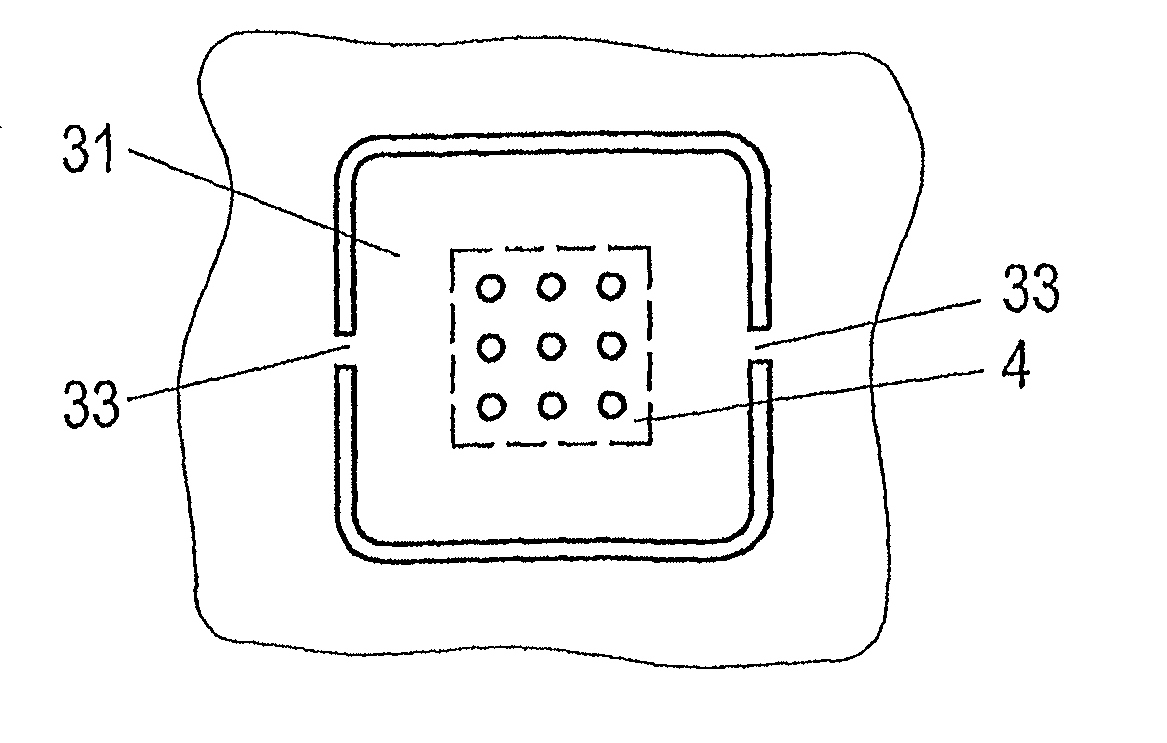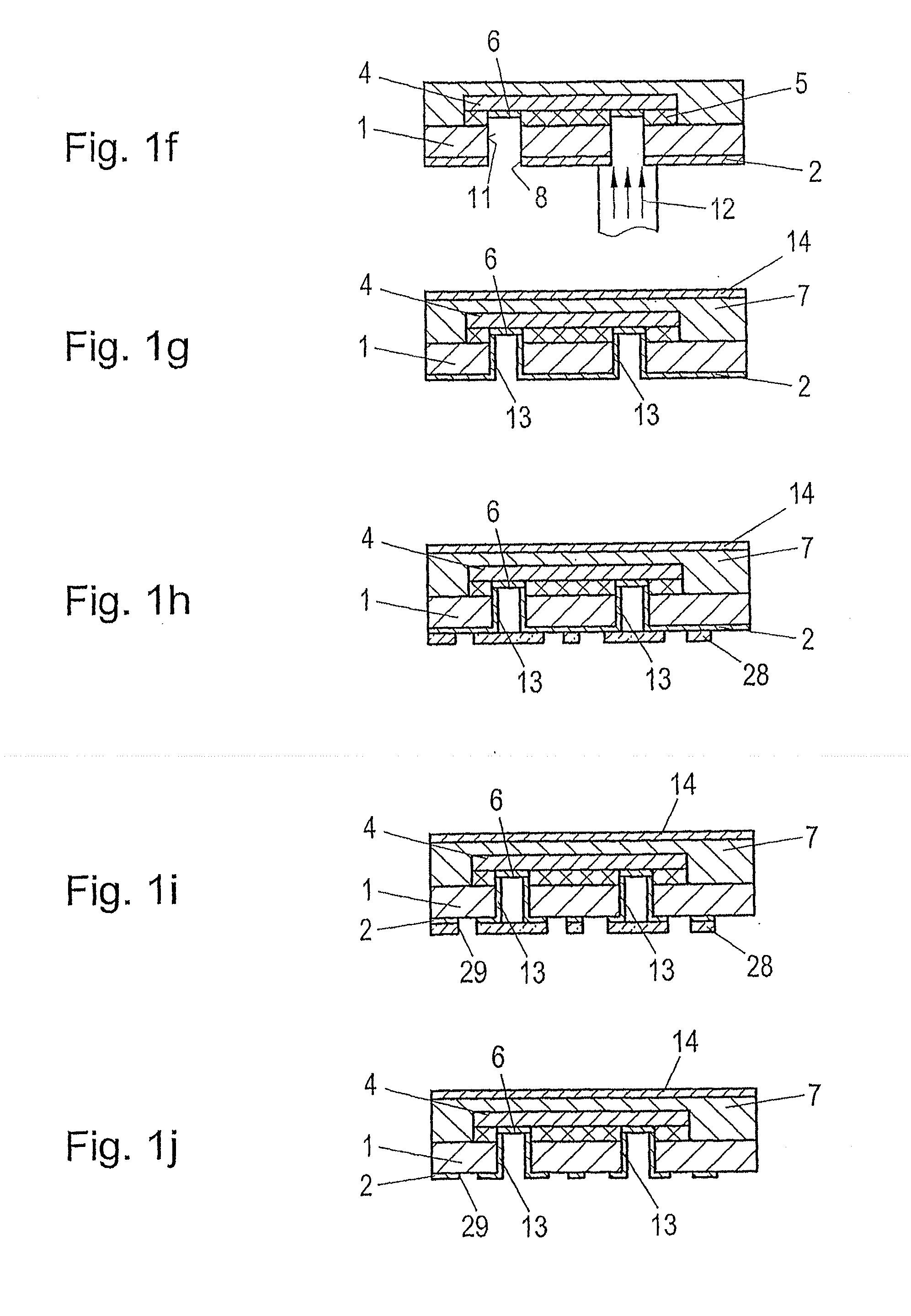Method for integrating an electronic component into a printed circuit board
a technology of electronic components and printed circuit boards, applied in the association of printed circuit non-printed electric components, printed circuit aspects, lithographic masks, etc., can solve problems such as the inability to connect individual layers, and achieve the effects of avoiding damage to already fixed components, simple and reliable production, and large process tolerances
- Summary
- Abstract
- Description
- Claims
- Application Information
AI Technical Summary
Benefits of technology
Problems solved by technology
Method used
Image
Examples
example 1
[0055]Thin insulating layer (15-30 μm) and / or adhesive with low filler content
[0056]Pulsed CO2 laser
[0057]Power: 3 watts
[0058]Beam diameter: 180 μm
[0059]Pulse duration: 6 μs
[0060]Number of pulses: 13
[0061]Hole diameter: 75 μm
[0062]Considering the above-indicated parameters relating to the performance of the used CO2 laser, it is apparent that, due to the holes or perforations 8 made by the laser beam 9 in the method step according to FIG. 1e, a suitable cover of the insulating layer 1 located therebehind is provided for forming holes 11 that are contoured according to the contacts 6.
[0063]When providing a larger thickness for the insulating layer 1 and / or an adhesive 5 having a higher filler content, and / or for the formation of larger holes or perforations 11, a CO2 laser having an accordingly higher power according to the following Example 2 can be employed.
example 2
[0064]Thick insulating layer (30-50 μm) and / or adhesive with higher filler content
[0065]Pulsed CO2 laser
[0066]Power: 4 watts
[0067]Beam diameter: 280 μm
[0068]Pulse duration: 8 μs
[0069]Number of pulses: 13
[0070]Hole diameter: 120 μm
[0071]In this manner, even large holes or perforations 11 can be produced in an accordingly short time.
[0072]After the production or formation of the further conducting layer 13 for contacting the contacts 6 of the integrated or received component 4, it is indicated in FIG. 1h in the context of a subtractive method that a photoresist 28 is applied for further processing or patterning the conducting layer 2 and, if desired, also the additional conducting layer 13.
[0073]Corresponding to the application of the photoresist 28, a patterning is formed in the conducting layer 2 in a further method step according to FIG. 1i, e.g. by an etching procedure, by making perforations or holes 29 in the conducting layer in regions that are not covered by the photoresist 28...
PUM
| Property | Measurement | Unit |
|---|---|---|
| Time | aaaaa | aaaaa |
| Time | aaaaa | aaaaa |
| Power | aaaaa | aaaaa |
Abstract
Description
Claims
Application Information
 Login to View More
Login to View More - R&D
- Intellectual Property
- Life Sciences
- Materials
- Tech Scout
- Unparalleled Data Quality
- Higher Quality Content
- 60% Fewer Hallucinations
Browse by: Latest US Patents, China's latest patents, Technical Efficacy Thesaurus, Application Domain, Technology Topic, Popular Technical Reports.
© 2025 PatSnap. All rights reserved.Legal|Privacy policy|Modern Slavery Act Transparency Statement|Sitemap|About US| Contact US: help@patsnap.com



